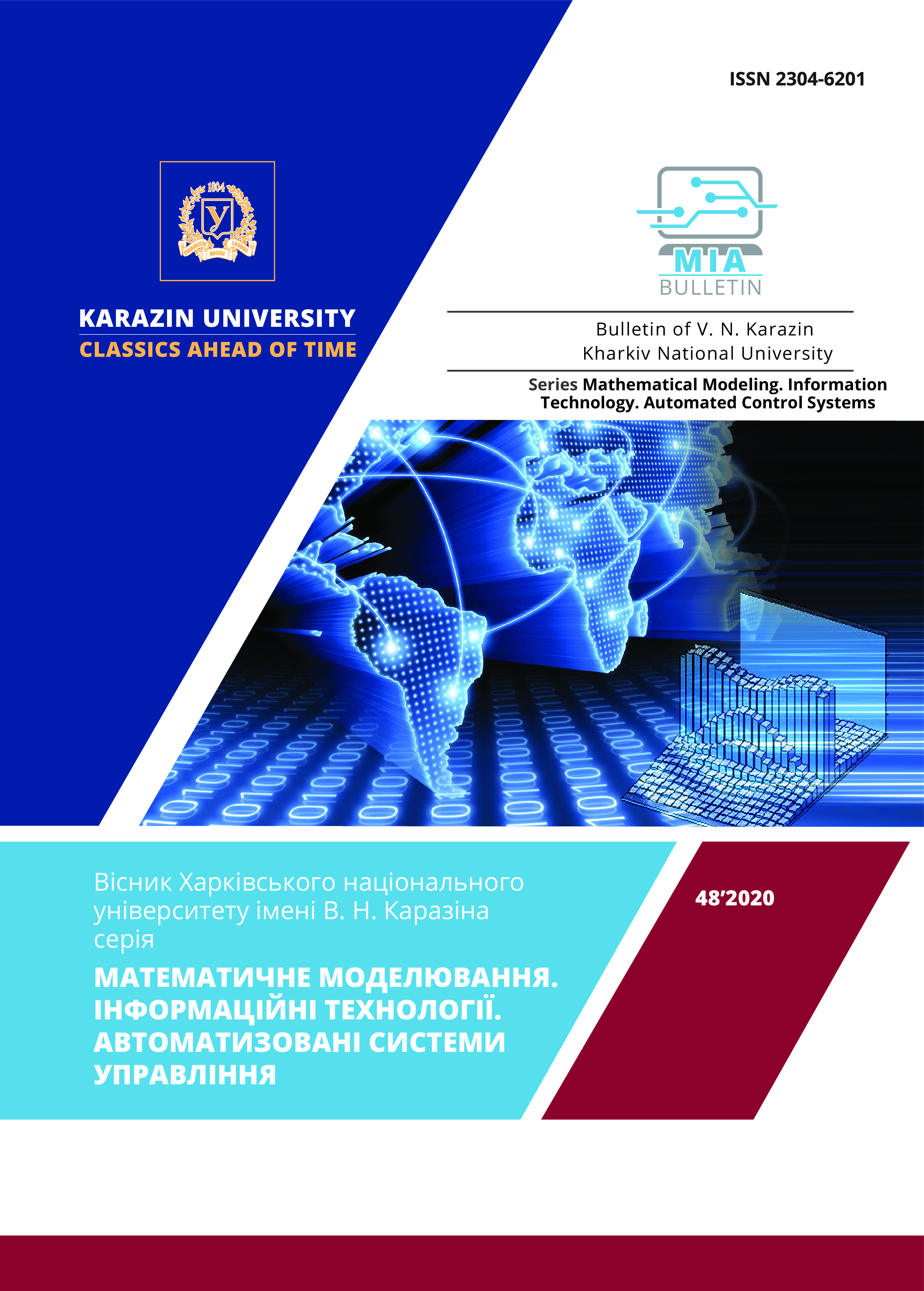Моделювання нечітких процесів управління транспортними системами пасажирських перевезень
Анотація
У пошуку нових ефективних методів та інструментів управління пасажирськими перевезеннями, які спрямовані на мінімізацію часу обслуговування та досягнення максимального показника задоволення потреб пасажирів у транспорті, роботу маршруту та вивчення пасажиропотоку на ньому корисно розглянути за допомогою методів нечіткої логіки, що забезпечують механізм роботи з неточними поняттями, вводять нечіткі множини, проводять з ними логічні дії та отримують кінцевий результат поставленої задачі. У даній роботі з використанням функцій приналежності нечітким множинам розроблено алгоритм пошуку розкладу роботи транспортних засобів на маршруті як послідовності інтервалів обслуговування, що відповідають у ході поставленої задачі нечіткій функції цілі – задоволення потреб населення у перевезеннях та нечітким обмеженням на використання транспортних засобів, які обслуговують маршрут міського пасажирського транспорту.
Завантаження
Посилання
/Посилання
P.R. Levkovec, M.M. Moroz, and R.V. Kobileckiy, “Improved logistics management of passenger transportation”, Vestnik KDPU, vol. 6(47), 113-115, 2007. http://www.kdu.edu.ua/statti/2007-6(47)/113.pdf [in Ukrainian]
A. Ceder, “Planning and Evaluation of Passenger Ferry Service in Hong Kong”, Transportation, vol. 33, p. 133–152, 2006. https://www.worldtransitresearch.info/research/2324
A. Ceder, S. Voß, & J. Daduna, “Efficient Timetabling and Vehicle Scheduling for Public Transport. Computer-Aided Scheduling of Public Transport”, Lecture Notes in Economics and Mathematical Systems, vol 505, 37-52, 2001. https://doi.org/10.1007/978-3-642-56423-9_3
P.F. Gorbachov, E.V. Lyubiy, “Modeling the demand for transportation of the population of small towns by route passenger transport: monograph”, Kharkov: KhNADU, 2014. https://scholar.google.com.ua/citations?user=aOVv_AoAAAAJ&hl [in Ukrainian]
A. Alvarez, S. Casado, J. Gonzalez Velarde, & J. Pacheco, “A computational tool for optimizing the urban public transport”, Journal of Computer System Sciences International, vol. 49(2), 244-252, 2010. https://www.researchgate.net/publication/226909691_A_computational_tool_for_optimizing_the_urban_public_transport_A_real_application
F. Leurent, “Transport capacity constraints on the mass transit system: systemic analysis”, European Transport Research Review, vol. 3: 11-21, 2011. https://doi.org/10.1007/s12544-011-0046-5
Tuin, Marieke S. van der and A. Pel, “The disruption transport model: computing user delays resulting from infrastructure failures for multi-modal passenger & freight traffic”, European Transport Research Review, vol. 12: 1-10, 2020. https://doi.org/10.1186/s12544-020-0398-9
L.A. Zadeh, “Fuzzy sets”, Information and Control, vol. 8(3), 338-353, 1965. https://doi.org/10.2307/2272014
R.E. Bellman, L.A. Zadeh, “Decision-Making in a Fuzzy Environment”, Management Science, vol. 17, 141-164, 1970. https://doi.org/10.1287/mnsc.17.4.B141
Левковець П.Р., Мороз М.М., Кобилецький Р.В. Удосконалення логістичного управління перевезень пасажирів. Вісник КДПУ імені Михайла Остроградського. 2007. Вип. 6 (47). С. 113-115. http://www.kdu.edu.ua/statti/2007-6(47)/113.pdf
Ceder A. Planning and Evaluation of Passenger Ferry Service in Hong Kong. Transportation. 2006. Vol. 33. P. 133–152. https://www.worldtransitresearch.info/research/2324
Ceder A., Voß S., Daduna J. Efficient Timetabling and Vehicle Scheduling for Public Transport. Computer-Aided Scheduling of Public Transport. Lecture Notes in Economics and Mathematical Systems. 2001. Vol. 505. P. 37-52. https://doi.org/10.1007/978-3-642-56423-9_3
Горбачов П.Ф., Любий Є.В. Моделювання попиту на перевезення населення малих міст маршрутним пасажирським транспортом: монографія. Харків: ХНАДУ, 2014. 257 с. https://scholar.google.com.ua/citations?user=aOVv_AoAAAAJ&hl
Alvarez A., Casado S., Gonzalez Velarde J., Pacheco J. A computational tool for optimizing the urban public transport. Journal of Computer System Sciences International. 2010. Vol. 49(2). P. 244-252. https://www.researchgate.net/publication/226909691_A_computational_tool_for_optimizing_the_urban_public_transport_A_real_application
Leurent F. Transport capacity constraints on the mass transit system: systemic analysis. European Transport Research Review. 2011. Vol. 3. P. 11-21. https://doi.org/10.1007/s12544-011-0046-5
Marieke S. van der Tuin, Pel A.J. The disruption transport model: computing user delays resulting from infrastructure failures for multi-modal passenger & freight traffic. European Transport Research Review. 2020. Vol. 12. P. 1-10. https://doi.org/10.1186/s12544-020-0398-9
Zadeh L.A. Fuzzy sets. Information and Control. 1965. Vol. 8(3). P. 338-353. https://doi.org/10.2307/2272014
Bellman R.E., Zadeh L.A. Decision-Making in a Fuzzy Environment. Management Science. 1970. Vol. 17. 141-164. https://doi.org/10.1287/mnsc.17.4.B141




